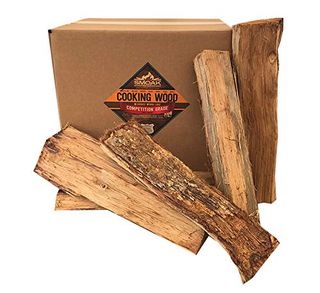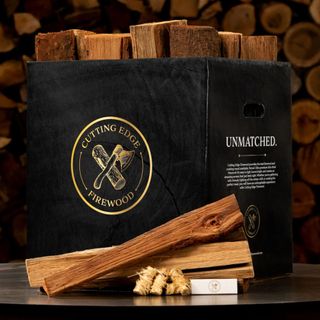The best wood for fire pits revealed – and the wood you should avoid
Using the best wood for fire pits will save your evening from foul smoke
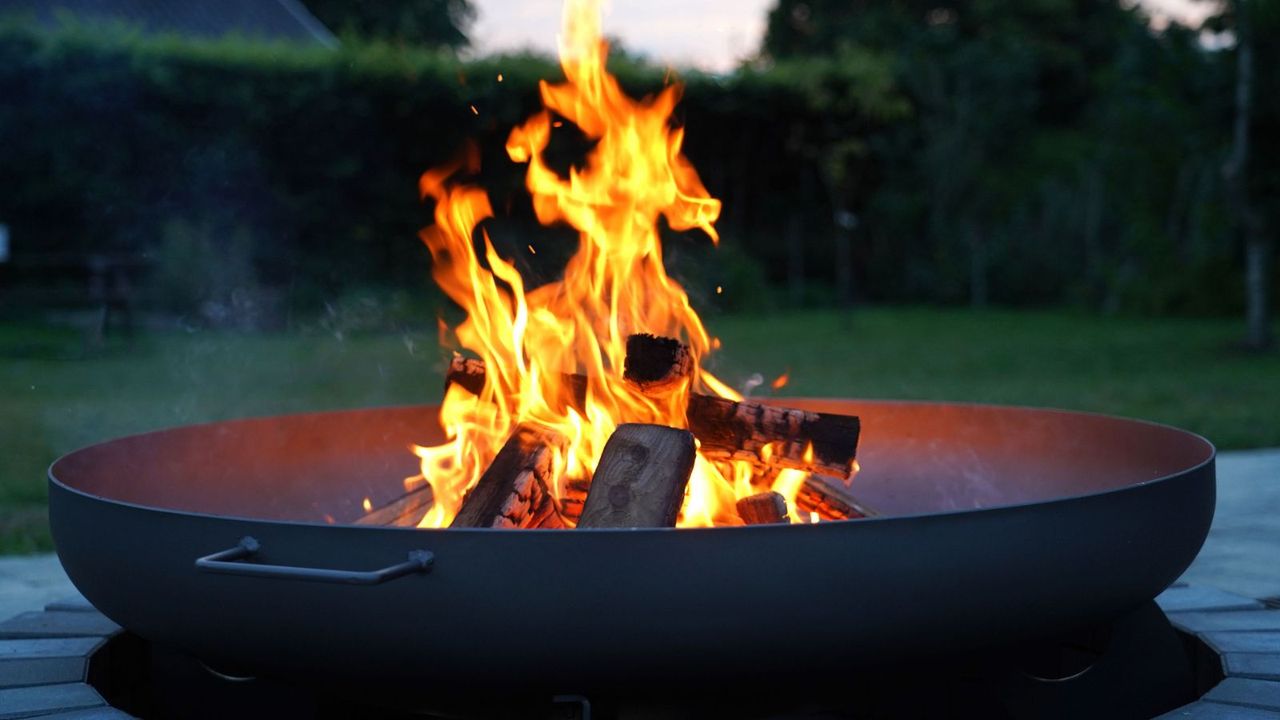

A good firepit is the perfect way to unwind in the evening. Once a cookout's died down and only the core of the family remains, a fire pit is the perfect cozy focal point of a patio. The warmth and gentle firelight can keep the fun going long into the night.
However, it can be a pain to find the right wood for your fire. If you've ever used a fire pit, you may have found that the usual cozy atmosphere is ruined by acrid smoke or logs that just won't light.
I spoke to a lumber expert about the best types of wood for your fire pit, as well as uncover the wood you should never use.
Use hardwoods for the best fire
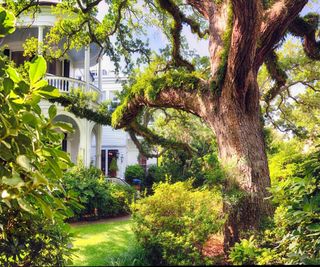
Oak is easily the best wood to use in a fire pit and there are several reasons for this. Lumber expert Leroy Hite told me: 'High-quality kiln dried oak is the classic choice for a dense, durable burn. Oak provides consistent heat and an inviting fire.'
This is because oak is a hardwood. Leroy says: 'Hardwoods are denser in structure than resinous softwood species such as pine. The higher-density woods like oak and hickory produce more heat and sustain their flames for longer.'
There are several reasons that oak is the best hardwood to use for a fire. The first is that oak is a readily available hardwood in much of the country. Other hardwoods are also great, but that's no good if you can't find them. For example, Leroy says: 'Ash is a good wood for firewood because it burns with a consistent flame and a medium heat. However, it is not as available as oak wood'.
As well as availability, it's important to consider burn time. Leroy also recommends maple, but it can't quite match oak. 'Maple creates a mildly sweet fire and burns with a lovely aroma and warmth. That said, it doesn’t burn as long or as hot as oak,' he says.
If you can find it, kiln-dried oak is best because the process of drying it in a kiln evaporates almost all of the moisture in the wood. This makes for a much better wood for burning, because there is a very low chance that the wood is rotten or contains fungus or insects that could introduce moisture.
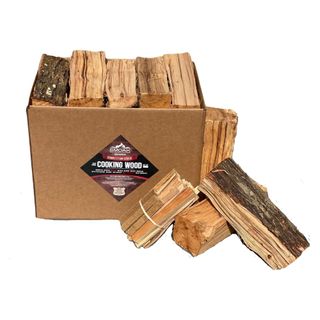
These 12-inch splits of red oak are perfect for a fire pit. They're also USDA food-safe, so you can also use them for smoking meat.

Leroy is founder and CEO of Cutting Edge Firewood. Leroy is an expert on firewood, starting and maintaining a fire, species of hardwoods and proper firewood preparation. He is also an expert on cooking wood, including the pairing of species with proteins, what type of wood pairs with types of grills or smokers, wood smoke as an ingredient, proper cooking techniques using wood as fuel source, and using wood for pizza ovens and portable pizza ovens.
Use softwoods - but only as firestarters
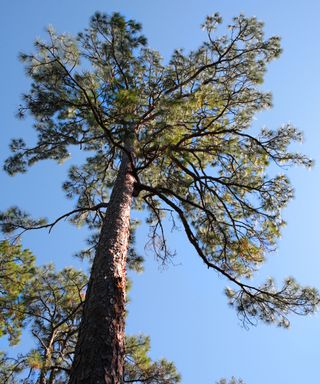
Pine seems like an obvious choice for a fire pit, especially if you live in the southeast or northwest. It's easy to find and evokes a rustic, cabin feel, and the smoke smells incredible. In many parts of the country it's all that's available, especially if you're harvesting your wood on your own property. However, it's not always a great choice for a fire pit.
Leroy said: 'Even though evergreens are readily available in the woods, they are softwoods and include a lot of resin. Pine burns very quickly due to the resin and doesn’t hold heat long.'
This means it's not always a smart choice for a fire pit, as you don't get as long of a burn as with oak. It does a fine job, it's just not as good as oak. You need a lot more of it to achieve the same effect, and you need to feed the fire more often - so it's a little more work.
On top of that, the resin released from pine can build up as creosote, which can be a major fire hazard. That's fine if you have an open bowl fire pit, but if you use a chimenea or a fireplace built into your landscaping you'll quickly find a worrying build-up of creosote. Creosote is flammable, so it can cause a chimney fire. In fact, not only is it an irritant to skin, but the EPA says that it's likely to be a carcinogen.
However, it's not all negative. Where pine truly shines is as a fire starter. Pine burns fast and hot, so using pine sticks or shavings as kindling is a great way to get your fire started. You can find pine kindling fairly cheaply, like this 10lb box of pine kindling at Walmart.
The wood to avoid
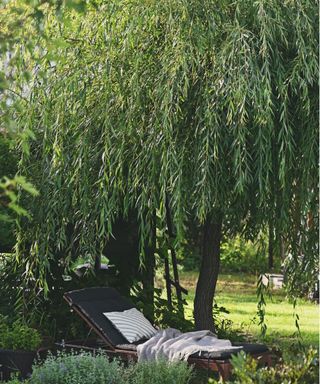
There a lots of different types of wood to avoid. The key species to avoid is willow, even though it's technically a hardwood. Leroy says: 'Willow is not a great wood for firewood. If you can find seasoned willow, it burns quickly and has a very low output of heat.'
The other wood to avoid is green and rotten wood. Leroy adds: 'If you can even get it to ignite, green wood will yield an acrid, grey smoke that is unpleasant to be around' - which isn't what you want when socializing in the evening.
Similarly, rotten wood is unsafe. Leroy says 'using rotten wood creates a billowing, dirty smoke full of particulates and emissions from the rot and fungus', adding: 'It is not healthy to stand around a fire from rotten wood and inhale the dirty smoke.'
On top of the health issues, rotten wood can be a fire hazard. 'With wet or rotted wood, moisture can build up in pockets of wet or rotted wood which can then explode and send little pieces of hot wood out of the fire.'
You should also avoid driftwood. Driftwood is easy to find if you live on the coast, but it's often too wet to use, so you'll find many of the same issues as burning green wood.
The final consideration is painted or treated wood. If you have wood left over from yardwork or home improvement - perhaps an old fence panel you've replaced that day, or an old pallet, or an old wooden door - think twice before you chop it up and throw it on the fire pit. Stained, painted, or chemically treated wood releases toxic chemicals when burned. It can be incredibly harmful and make you very sick, so you should never burn this waste wood.
Wood FAQs
How big can my fire be?
It depends on where you are in the country. Most towns have local laws about how big you can build a fire; it tends to be under a four-foot diameter but is often much smaller.
Are fire pit ashes good for plants?
Fire pit ashes are good for plants in small quantities. In small amounts, ash can help to raise the pH of your soil so it isn't too acidic, promoting healthy plant growth. However, in large quantities it can make the soil alkaline, which can harm your plants.
Fire pits are perfect for relaxing, but they can be very dangerous if used incorrectly. For more help with fire pits, take a look at our coverage of whether it's legal to have a fire pit in your area, or if it's safe to have a fire pit under a gazebo.
Sign up to the Homes & Gardens newsletter
Design expertise in your inbox – from inspiring decorating ideas and beautiful celebrity homes to practical gardening advice and shopping round-ups.

As a gardens and lifestyle contributor, Alex makes sure readers find the right information to help them make the best purchase. Alex got his start in reviewing at the iconic Good Housekeeping Institute, testing a wide range of household products and appliances. He then moved to BBC Gardeners’ World Magazine, assessing gardening tools, machinery, and wildlife products.
-
 5 sofa styles to avoid if you want a timeless living room
5 sofa styles to avoid if you want a timeless living roomThese sofa styles are the ones to avoid if you want to future-proof your living room, according to interior designers
By Ruth Doherty Published
-
 5 low-energy and useful tasks to try instead of doom-scrolling – this brain hack will break bad habits
5 low-energy and useful tasks to try instead of doom-scrolling – this brain hack will break bad habitsExperts urge you to try it for your wellbeing
By Chiana Dickson Published
